You may not find this terribly rewarding unless you're included here, so this is a good time for casual and random browsers to turn back before they get too caught up in the sweep and majesty of the proceedings and can't let go.
No visit to Lisbon is complete without a stop-in at Belém. Two, actually.
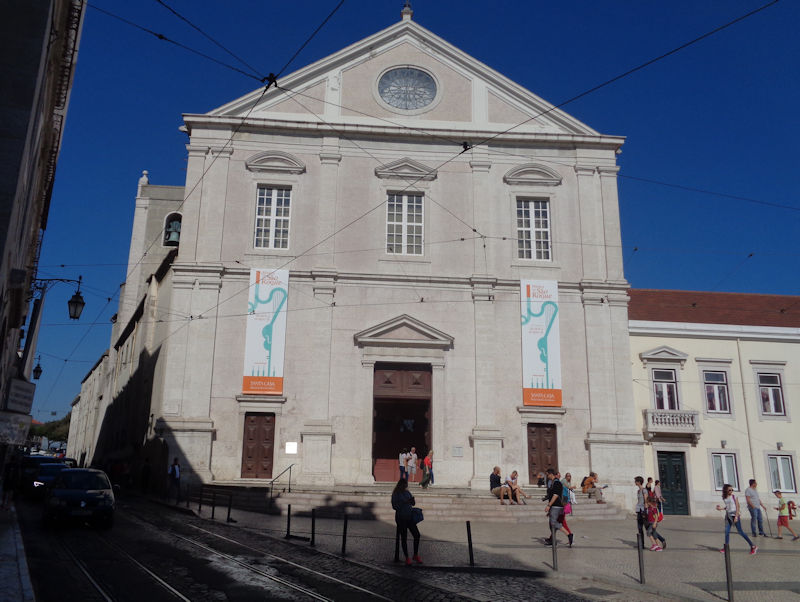
Our additional family participants have arrived from overseas, and we're dashing down the hill to join them for a restful lunch in the Mercato de Ribeira, 31 October 2017. That's the 16th century formerly Jesuit Igreja de São Roque, or Church of San Rocco (St Roch).
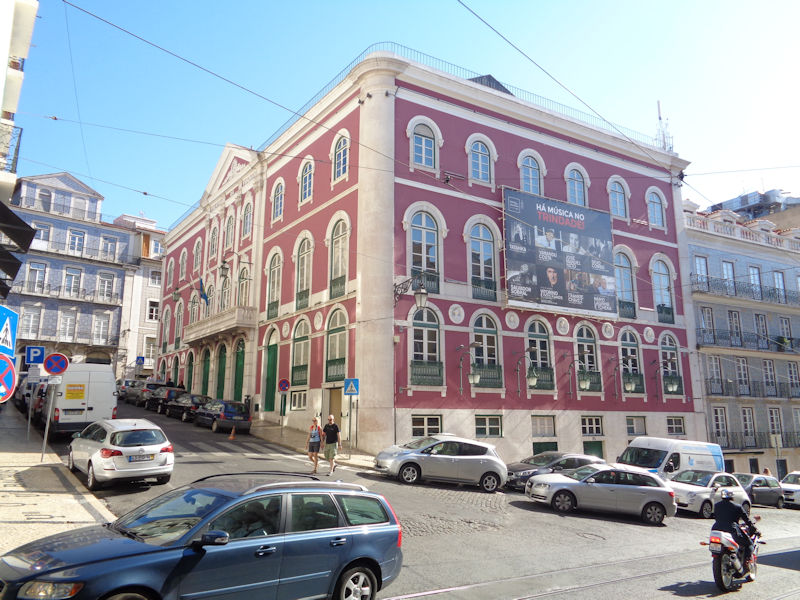
The Teatro da Trinidad, as we're galloping down the Rua da Misericórdia . . .

. . . racing past the Praça Luís de Camões, no time to tarry. Anyway, the Manifestation for work and workers is scheduled for 18 November, we can't wait around for that.
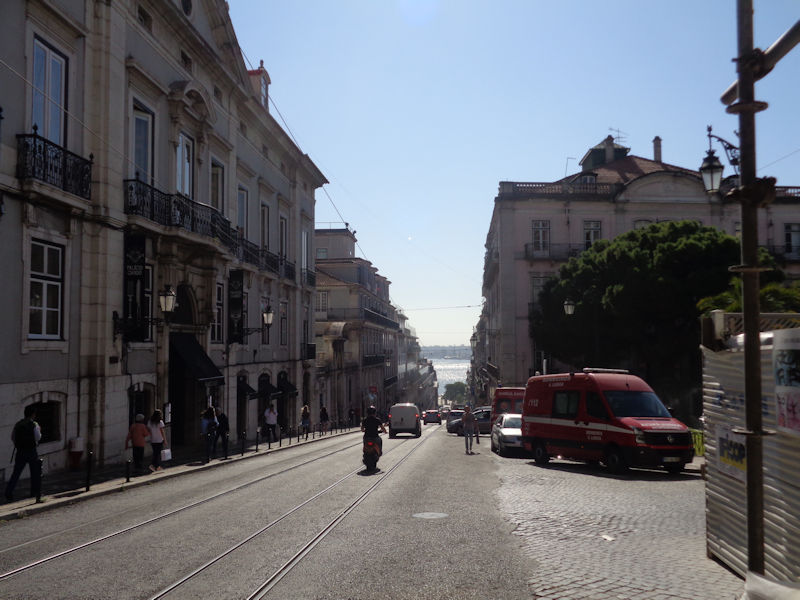
The river is in sight.
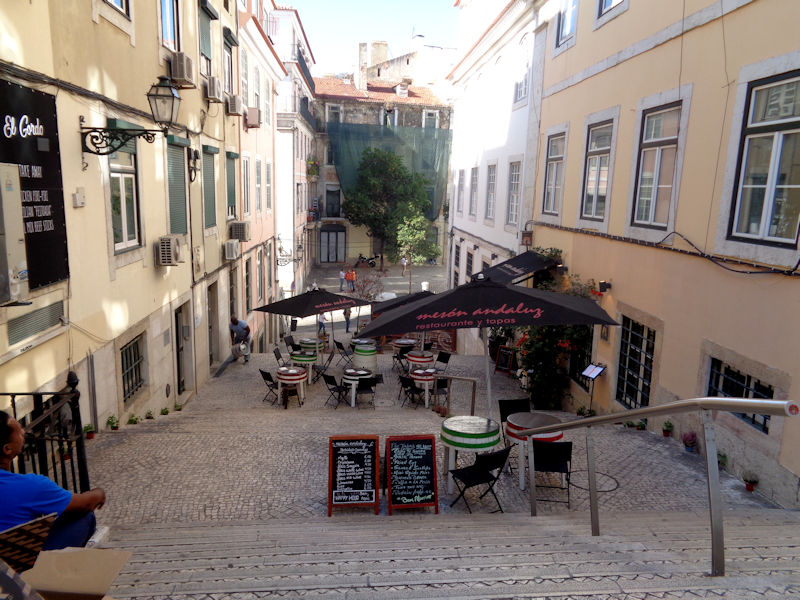
The restaurant-rich side alley of the Tv. do Alecrim . . .
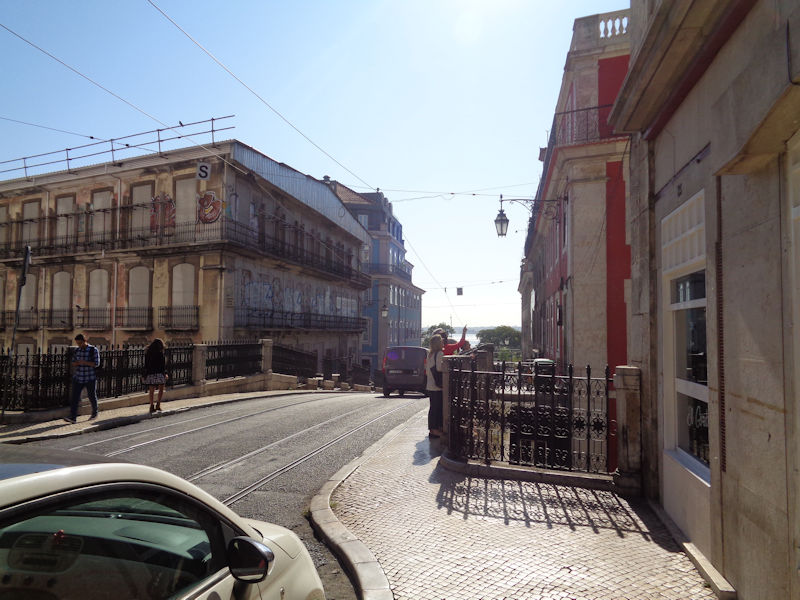
. . . off the main street Rua do Alecrim (formerly Misericórdia), as it crosses over . . .
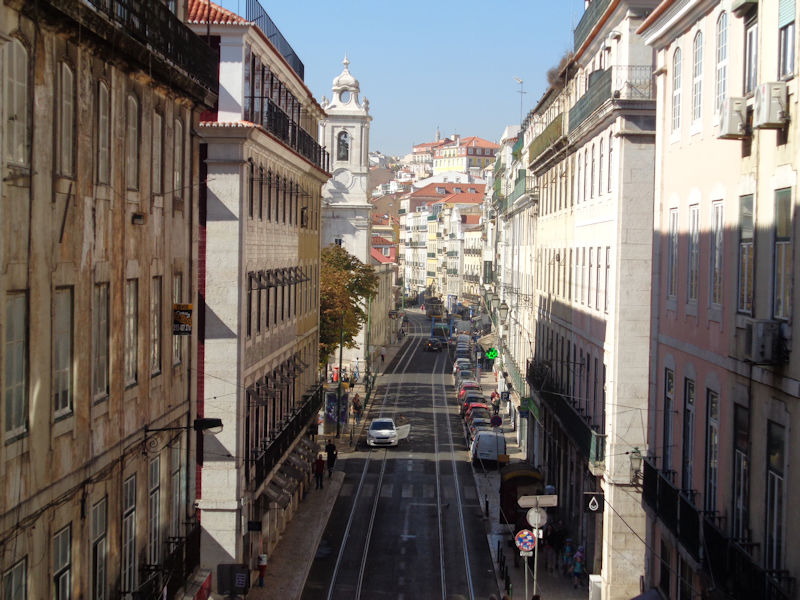
. . . the Rua de São Paulo . . .

. . . bursting out onto the Praça Duque da Terceira. The 1st Duke of Terceira was a hero of the Liberal Wars and thrice prime minister of Portugal; the inscription on the back of the statue's base celebrates his liberation of Lisbon on 24 July 1833.
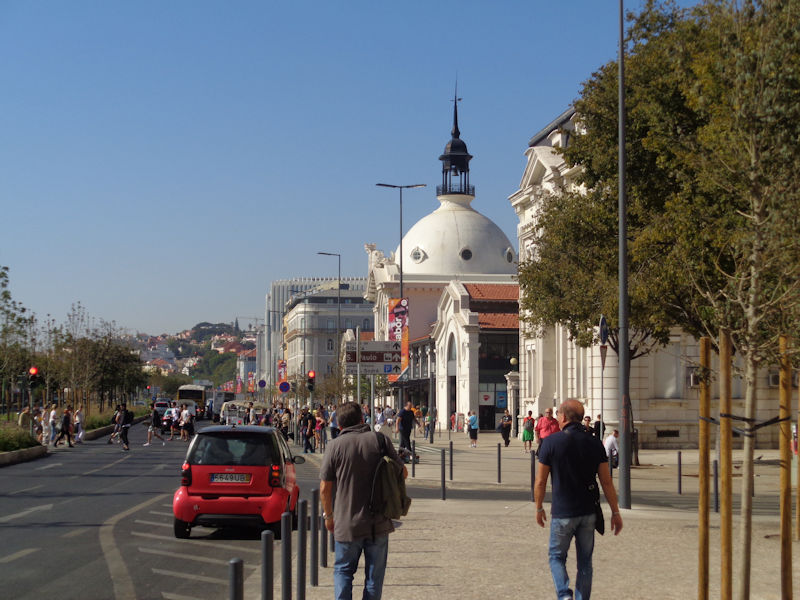
A decorous dash over to the riverside Mercato de Ribeira to join our party for a leisurely lunch amid the smorgasbord of choices amongst culinary styles.

We were here a few days ago, and it was fun, despite being a little difficult finding two seats together.
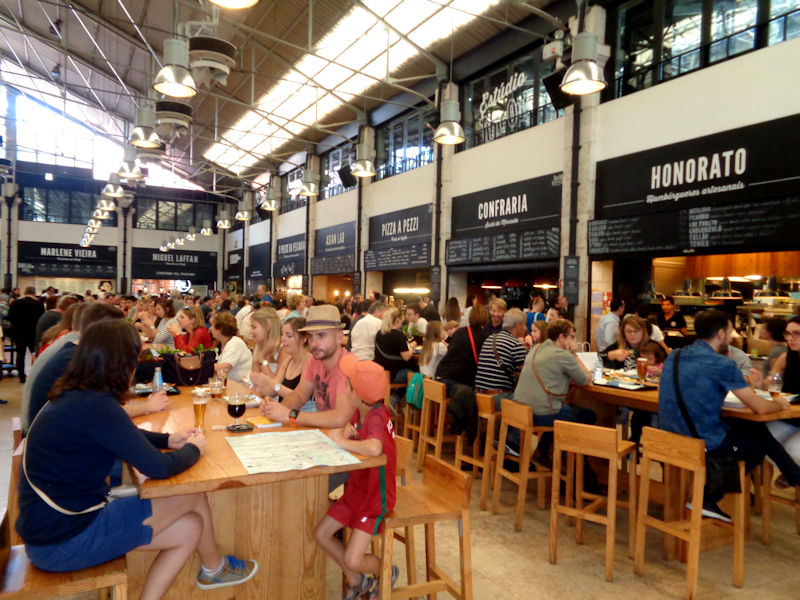
This time we're looking for four seats together, and for long moments there were none; in the end we were forced to dine in turns. How stressful.

Outside the Mercato de Ribeira, this is the statue of King Luis I (1861-1889) with its . . .
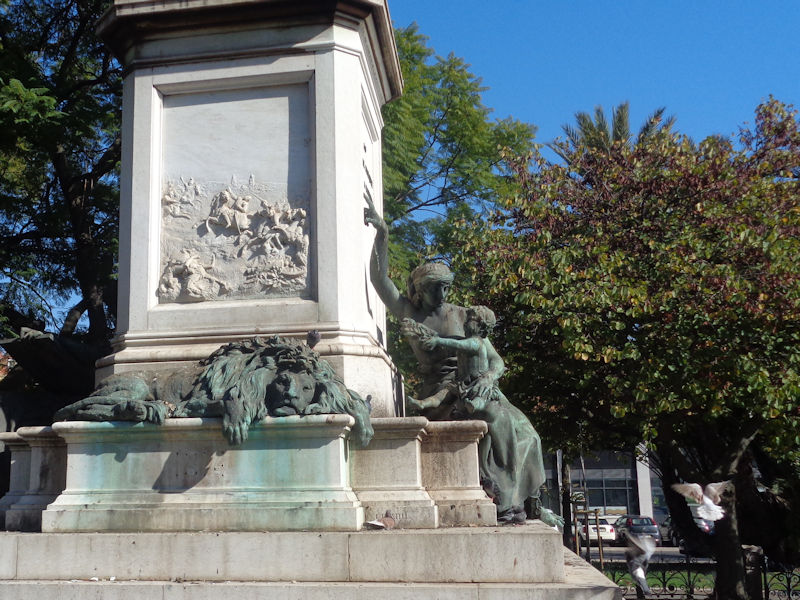
enigmatic symbolism. (This was in the days before DNA paternity tests.)

Kristin and Joellen in the courtyard of a new building along the riverfront

George and Joellen

We're ready for a visit to the Museu Nacional de Arte Antiga, dropped off by the taxi by the street door on the Rua das Janelas Verdes (i.e., 'green windows').

A few of us were here a few days ago and we've already stuck our favorite photos of the goods on display onto this earlier webpage, so we'll only repost a few of them here to give a flavor of the experience.

Starting with this one, obviously one of our favorites, posted at the front door like a Walmart greeter.
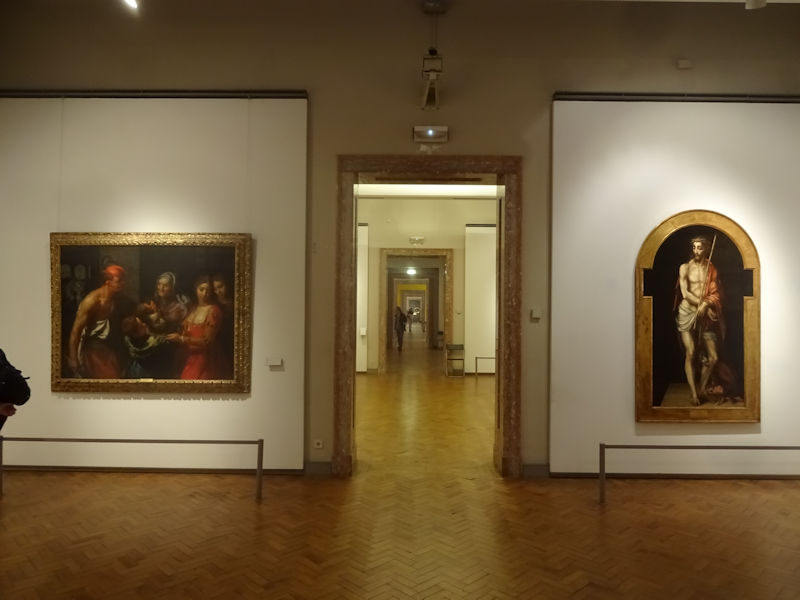
The generous layout in the European paintings section
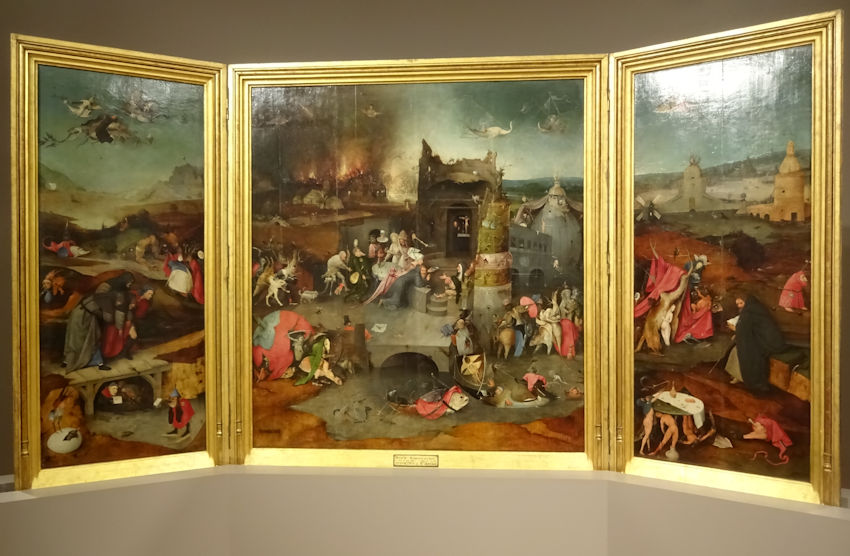
Arguably Bosch's second best, the triptych 'Temptations of St Anthony', ca. 1500
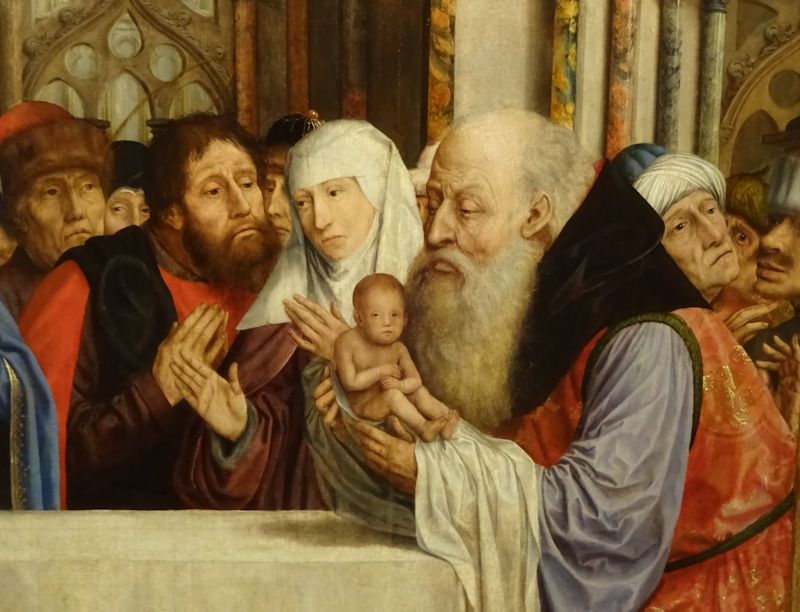
Baby Jesus before he became the Pantocrator (detail from 'The presentation in the temple', Quentin Metsys or his circle)

Breughel the Younger, 'Seven acts of mercy'

Exhausted, we're leaving by the southwestern end of the museum, bound now for . . .

. . . the Mosteiro dos Jerónimos or Hieronymites Monastery. Most of the monastery is occupied by the Maritime or Naval Museum and the National Archaeological Museum, the first of which we visited yesterday.

Today we're here for the church itself, closed yesterday, open today and right through that door under the arch, and free.
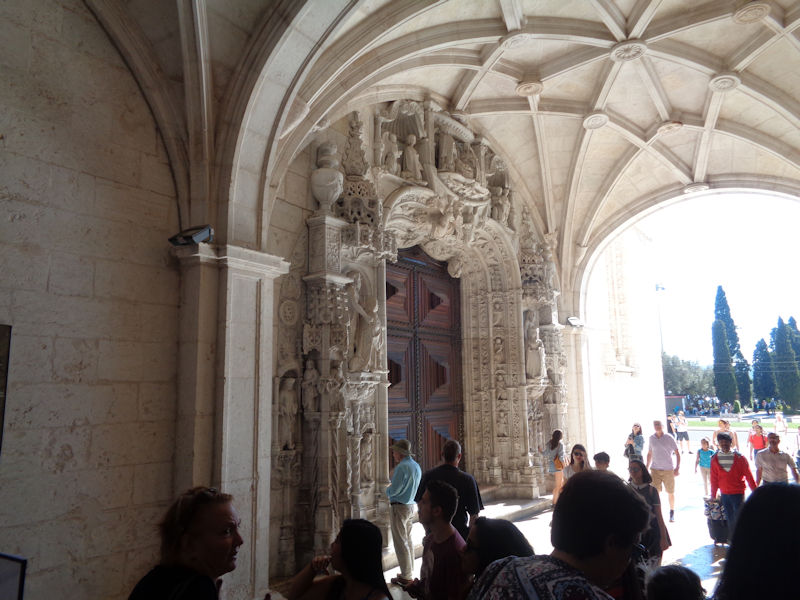
The elaborate southern door, facing the river and presently under scaffolding, is actually a side portal, and this ornate western portal is the main entrance facing the high altar at the far end of the church. It's considered to represent a transition from Gothic to Renaissance styles, as the Frenchman Nicolau Chanterene showed up and took over in 1517.
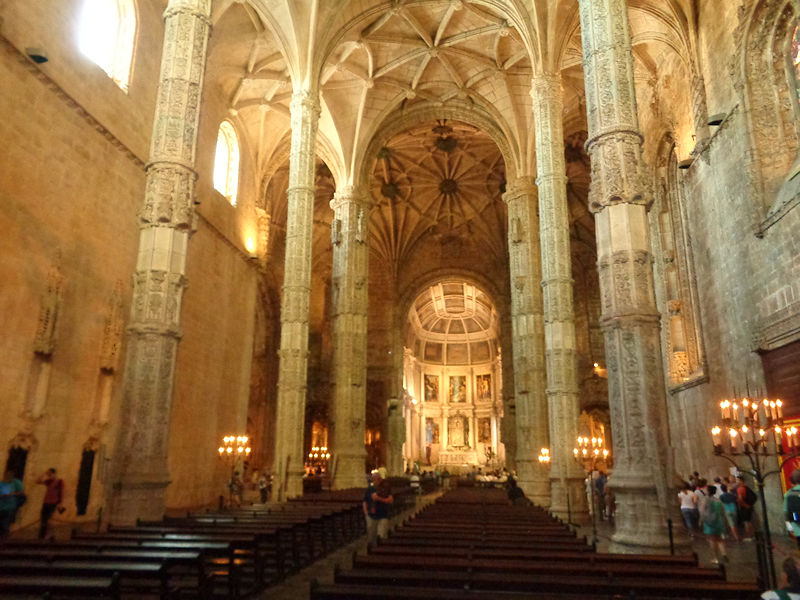
A single nave with two side aisles under a single ribbed vault ceiling, and six very decorated columns. It was designed and begun in 1501 in the Portuguese 'Manueline' style, but much of what we see is the work of a Spanish architect and sculptor named Juan de Castilho, who entered the scene in 1517.
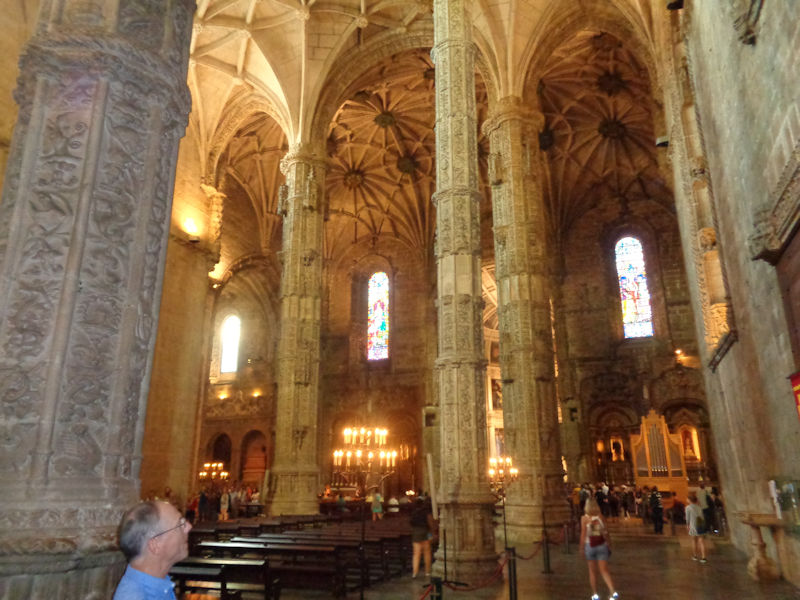
Work was delayed upon the death of Manuel I in 1521, and was halted in 1580 with the Spanish annexation of Portugal (the 'Iberian Union'); King Philip II was at the time devoting every ill-got ounce of silver from the Americas to the building of El Escorial near Madrid. Philip III evidently declared the monastery a 'royal funerary monument' and work was resumed in 1604.
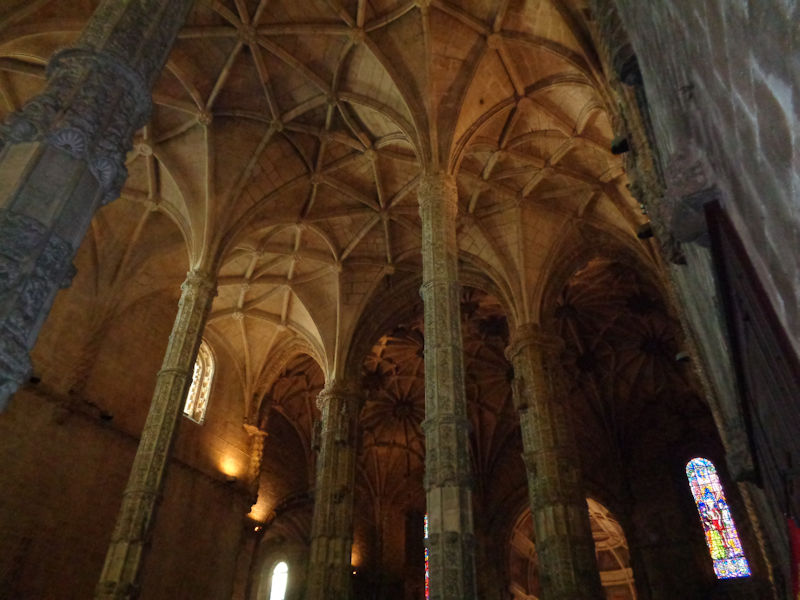
Ribbed vaulting -- the slender columns seem fragile, but the church and monastery, unlike most of the buildings in the Lisbon area, suffered very little damage in the 1755 earthquake.
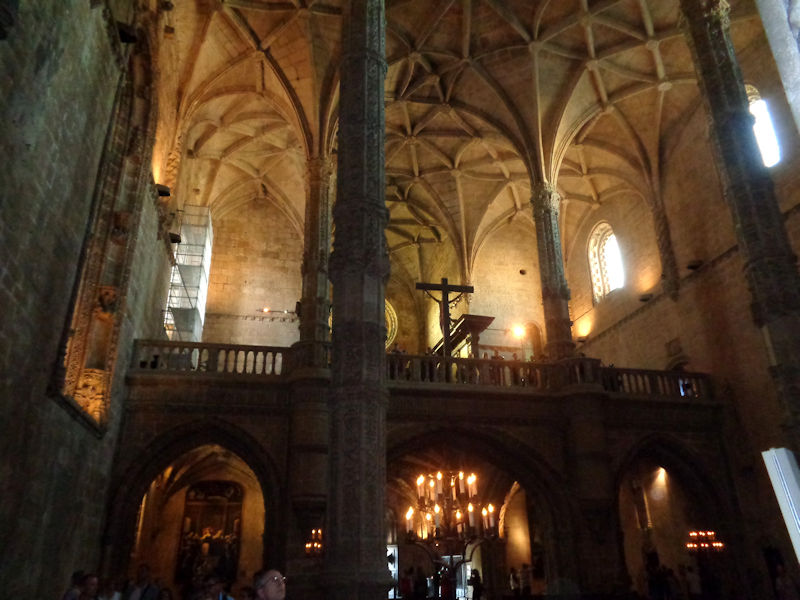
The upper choir, looking down into the nave

The raised chancel and high altar
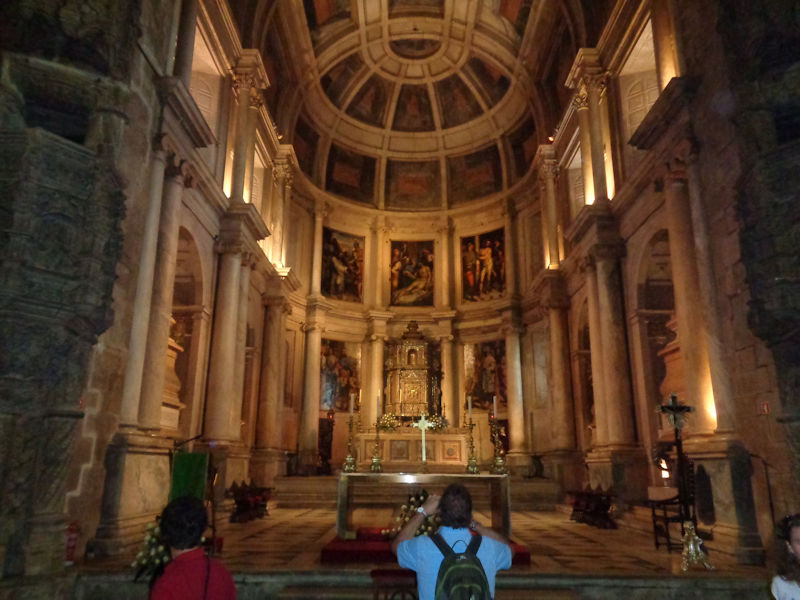
The chancel, with two royal tombs on either side
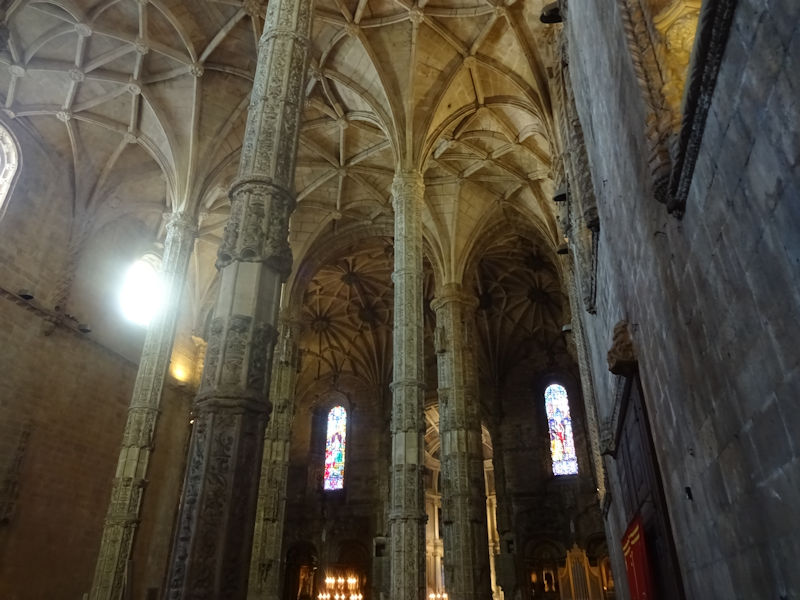
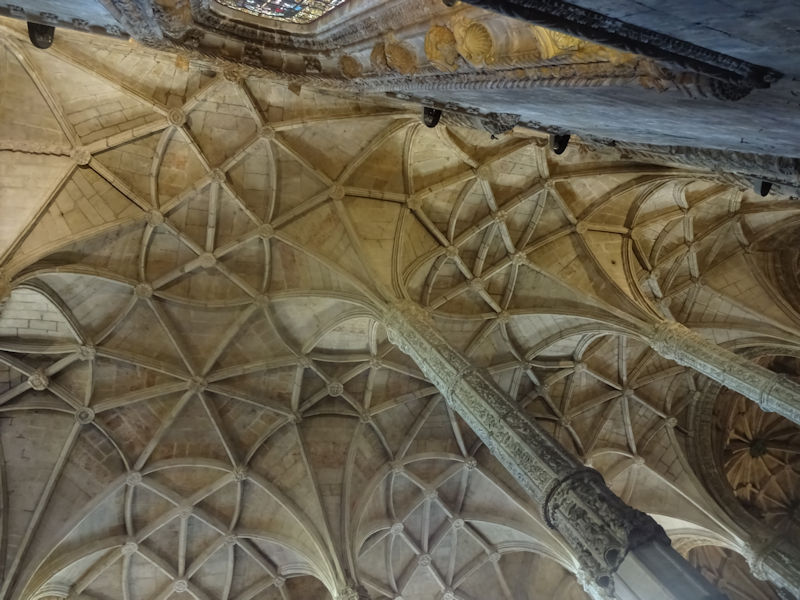

In the sacristy (tiny fee to enter), built 1517-1520 to Castilho's plans. The walls are lined with 14 oil paintings illustrating the life of Saint Jerome (Jerónimos, Hieronymus), by Simão Rodrigues of Lisbon between 1600 and 1610.

A demon tempting St Jerome with a book
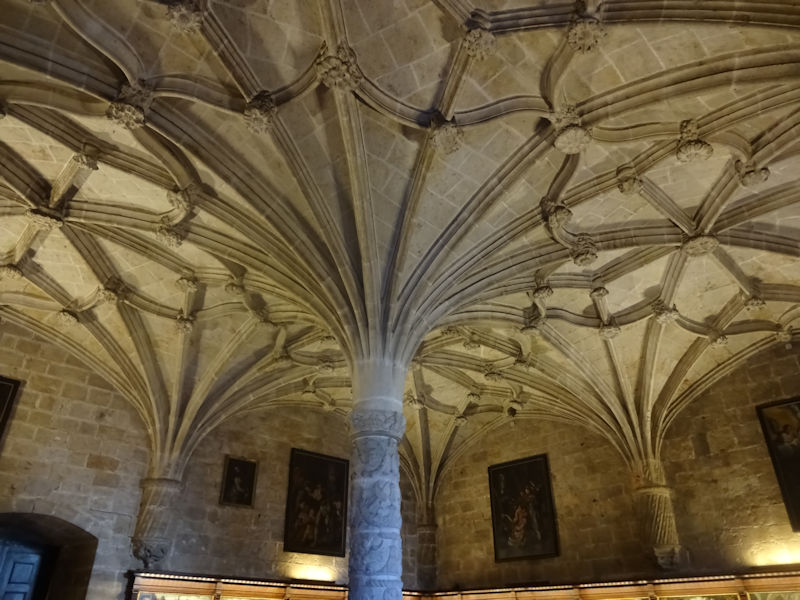
The ribbed vault of the sacristy is anchored by a single decorated column.
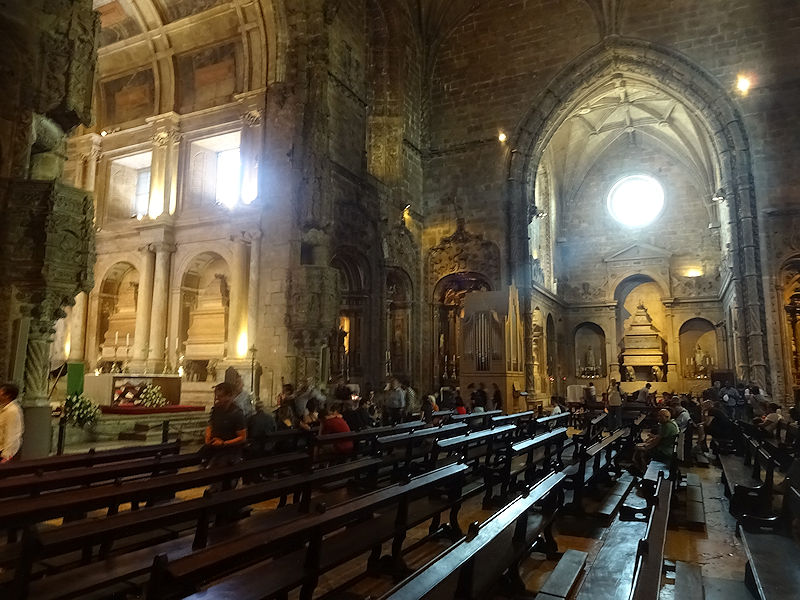
Back in the main body of the church, in the chancel on the left, there are the two tombs between the columns, each mounted on two elephants, of King John III (1502-1557) and his wife Queen Catherine of Austria (1507-1578), sister of the Emperor Charles V and regent for her grandson King Sebastian, virtually the last of the Aviz dynasty. Facing them from the left wall are similar tombs of King Manuel I (1469-1521) and his wife Maria of Aragon (1482-1517), daughter of Ferdinand and Isabella.
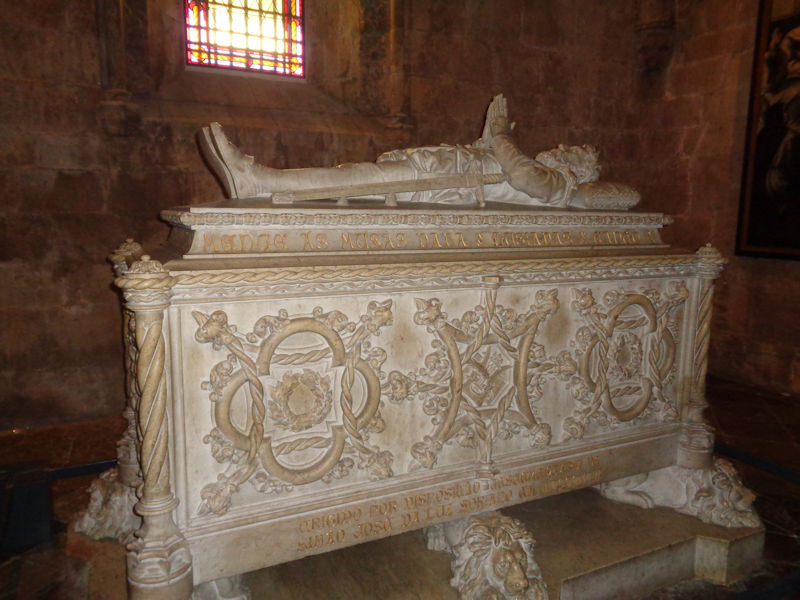
Flanking the interior by the western portal, this is the tomb provided for Portugal's most famous poet, Luís de Camões (ca.1524-1580), and on the other side . . .
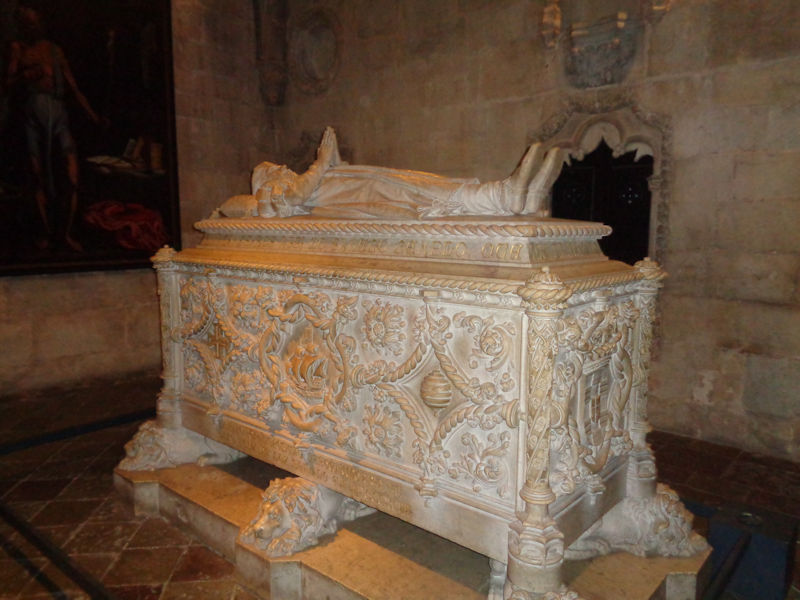
. . . the tomb of Vasco da Gama (d. 1524), both of whose remains were moved here, in these new 'neo-Manueline' tombs, in 1880.
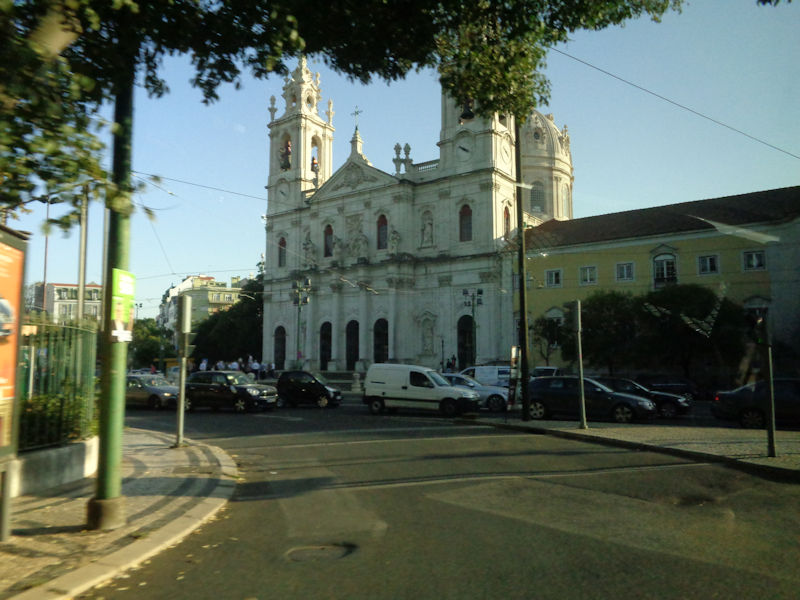
A hasty photo from the lurching taxi of the
Basílica da Estrela (1790)
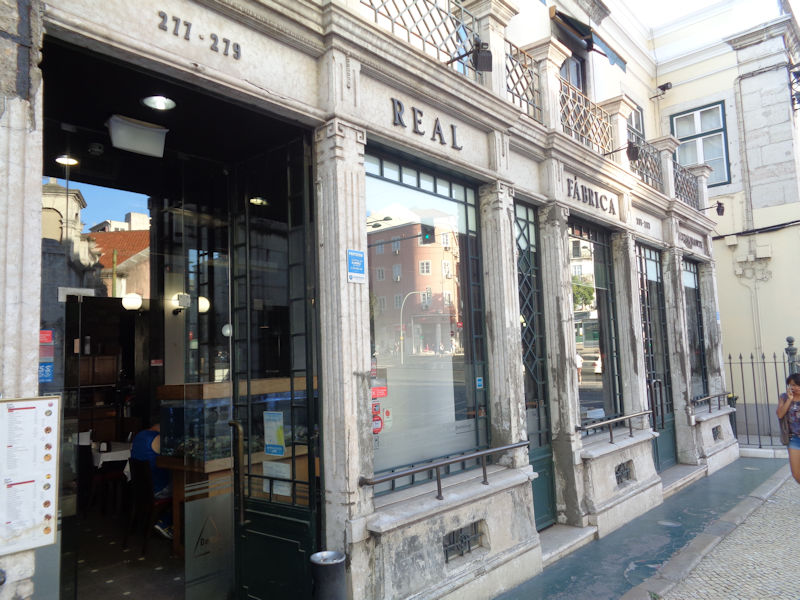
Dinner in the Real Fabrica once again
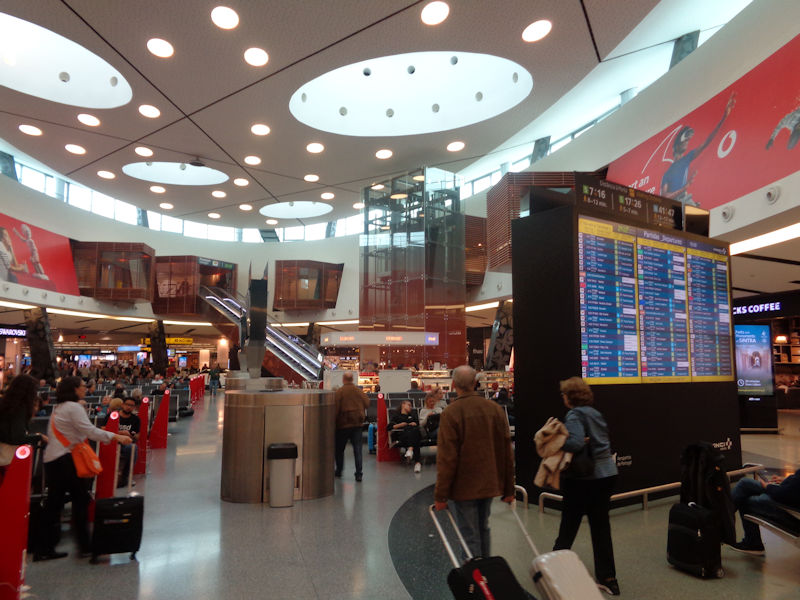
And the next day, as some of our party depart for the Lisbon docks to join a cruise, the rest of the party passes through Lisbon's attractive airport on the way home.








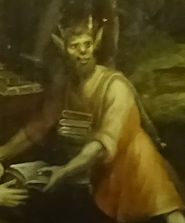 Dwight Peck's personal website
Dwight Peck's personal website









































